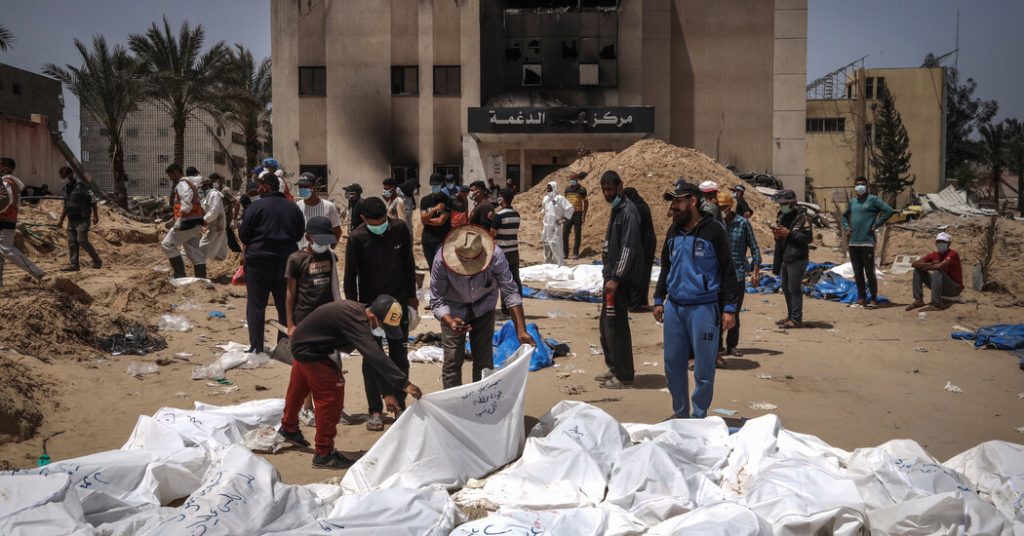The discovery of mass graves at Nasser Hospital in Gaza came two weeks after a similar find at Al-Shifa Hospital. Reports stated that some bodies had been found with their hands tied and stripped of their clothes, although this information could not be independently verified. Videos posted on social media by a photographer showed at least one body exhumed from the mass grave wearing blue medical scrubs with their hands bound together. Doctors at the hospital and the Gazan Health Ministry claimed that some people attempting to flee were shot at by Israeli soldiers, although this could not be verified.
The Israeli military was reported to have opened a secure route to evacuate civilians, but there were reports that they may have shot at Palestinians trying to leave the hospital. Amnesty International urged for human rights investigators and forensic experts to be granted immediate access to Gaza to ensure proper investigations into the mass graves and any potential violations of international law. Israel’s military presence in Nasser Hospital ended in late February, allowing Palestinian emergency services and family members to search for the missing.
Jihad al-Bayouk, who had buried his brother on the grounds of Nasser Hospital after he was killed in an Israeli drone strike, returned to find his brother’s body missing. He joined a group of people in digging every day to search for the bodies of their loved ones buried in the mass grave. After days of digging, he finally found his brother’s body in a different spot with the layers of plastic he wrapped him in torn off. The discovery of the mass graves sparked calls for accountability for any violations of international law and emphasized the importance of proper investigations to uncover the truth behind these deaths.
The U.N. High Commissioner for Human Rights, Ravina Shamdasani, stated that some bodies had been found with their hands tied and stripped of their clothes, based on reports from Gazan authorities. However, these claims could not be independently verified, and evidence was not provided to support the allegations. The videos of bodies exhumed from the mass grave showed disturbing visuals of individuals seemingly bound with hands tied together, further raising concerns about potential human rights violations during the conflict in Gaza. Questions were raised about the actions of the Israeli military in the area and the need for transparency in investigations.
Amnesty International’s senior director of research and advocacy, Erika Guevara Rosas, emphasized the urgent need for human rights investigators and forensic experts to gain access to Gaza to preserve evidence and ensure accountability. Without proper investigations, the truth behind the mass graves and possible violations of international law might never be uncovered. The withdrawal of the Israeli military from Nasser Hospital allowed for searches to begin for missing individuals, with families desperate to find the bodies of their loved ones. The discovery of the mass graves highlighted the importance of addressing human rights violations and seeking justice for the victims and their families in Gaza.
The search for missing bodies at Nasser Hospital, where individuals had been buried hastily during the conflict, led to the uncovering of disturbing conditions such as bodies stripped of clothing and showing signs of being bound. While reports from Gazan authorities and testimonies from locals pointed towards potential human rights violations, the lack of independent verification raised concerns about the accuracy of these claims. The need for thorough investigations and accountability for any violations was emphasized by international organizations such as Amnesty International, urging for access to Gaza to ensure evidence preservation and truth-seeking processes.


